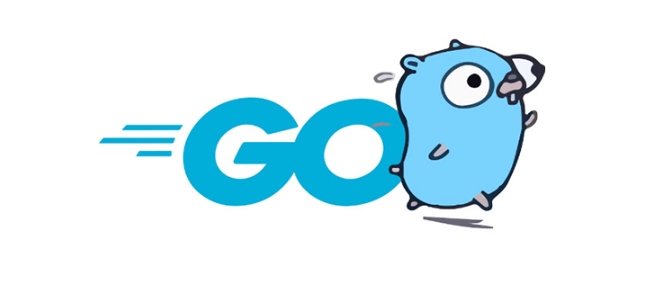cgo enables Go programs to call C code directly, essential for accessing C libraries, system APIs, or performance-critical routines when pure Go solutions are insufficient. 1) Use import "C" with a preceding comment block to include C headers or inline code. 2) Call C functions using the C. prefix, such as C.printf. 3) Convert Go strings to C strings with C.CString and always free memory using C.free to prevent leaks. 4) Pass slices by obtaining a pointer to the underlying array via &data[0] and casting to the appropriate C pointer type. 5) Access C variables through pointers, preferably wrapped in C functions for safety. 6) Be aware of limitations: performance overhead at the Go/C boundary, lack of goroutine safety in C code, build complexity requiring a C compiler, memory management responsibility, reduced portability, and risks with long-term storage of Go pointers in C. 7) Use cgo when interfacing with system libraries, wrapping established C libraries, or accessing OS-specific features not in Go’s standard library. 8) Avoid cgo when pure Go alternatives exist, performance is critical, or maximum portability is required. With careful use, cgo integrates Go into the broader systems programming landscape effectively and safely.

Go’s cgo tool allows Go programs to call C code directly, enabling access to existing C libraries, system APIs, or performance-critical routines written in C. While Go is designed to be self-contained and portable, cgo bridges the gap when integration with native code is necessary—such as when working with operating system features, hardware interfaces, or legacy systems.

You don’t need cgo for most Go development. In fact, pure Go code is preferred for portability and simplicity. But when you do need it, understanding how cgo works is essential.
How cgo Works: The Basics
cgo is not a foreign function interface (FFI) in the traditional sense. Instead, it acts as a preprocessor and glue layer that generates Go and C code to enable interoperability.

To use cgo, you must import the special pseudo-package "C" and include C headers or inline code in a comment block above the import:
/* #include <stdio.h> */ import "C"
This comment is processed by cgo. Everything in that block is treated as real C code—headers, function declarations, or even inline implementations.

After that, you can call C functions using the C. prefix:
func main() {
C.printf(C.CString("Hello from C!\n"))
}Note: CString converts a Go string to a *C.char, which is necessary because Go and C manage memory differently.
Passing Data Between Go and C
Data types in Go and C are not directly compatible. cgo provides type mappings and helper functions to convert between them.
Common Type Mappings
| Go Type | C Type |
|---|---|
C.int | int |
C.float | float |
C.double | double |
C.char | char |
C.size_t | size_t |
*C.char | char* (string) |
[]C.int | int[] |
Converting Strings
Go strings are immutable and not null-terminated. C strings are null-terminated arrays of char.
Use C.CString() to convert a Go string to a C string:
cs := C.CString("hello")
C.printf(cs)
C.free(unsafe.Pointer(cs)) // Important: free memory!?? Always free memory allocated by C.CString() using C.free, or you’ll leak memory.
Passing Slices and Arrays
To pass a Go slice to C:
data := []C.int{1, 2, 3, 4}
ptr := (*C.int)(&data[0])
C.process_array(ptr, C.int(len(data)))Here, &data[0] gets a pointer to the underlying array, which is then cast to a C pointer.
For safety, ensure the slice isn’t empty and isn’t moved by the garbage collector during the C call (usually fine for synchronous calls).
Calling C Functions and Using C Variables
You can call any C function available in the included headers:
/*
#include <stdlib.h>
*/
import "C"
import "unsafe"
func mallocExample() {
ptr := C.malloc(C.size_t(100))
if ptr != nil {
// Use memory...
C.free(ptr)
}
}You can also declare C functions inline:
/*
int add(int a, int b) {
return a b;
}
*/
import "C"
func goAdd(x, y int) int {
return int(C.add(C.int(x), C.int(y)))
}Global C variables can be accessed via pointers:
/*
int counter = 0;
*/
import "C"
func increment() {
C.counter
}Or from Go:
*(*C.int)(unsafe.Pointer(&C.counter)) = 1
But direct access is limited—usually, it’s cleaner to wrap variables in C getter/setter functions.
Limitations and Gotchas
While cgo is powerful, it comes with trade-offs:
- Performance overhead: Crossing the Go/C boundary has a cost. Avoid calling C functions in tight loops unless necessary.
-
No goroutine safety in C: C code does not understand Go’s goroutines. Blocking C calls can stall the Go scheduler unless you use
runtime.LockOSThreador ensure proper threading. -
Build complexity:
cgorequires a C compiler and complicates cross-compilation. - Memory management: You’re responsible for freeing C-allocated memory. Mixing Go and C allocators incorrectly leads to crashes or leaks.
-
Portability: Code using
cgois not pure Go and won’t compile on all platforms without the right C dependencies.
Also, avoid passing Go pointers to C functions that store them long-term. The Go garbage collector doesn’t track C memory, so this can lead to dangling pointers.
If you must pass Go callbacks to C, use //go:cgo callback and //go:cgo no_mangle directives carefully, and pin Go functions using C.functionName references.
When to Use cgo
Use cgo when:
- You need to interface with system libraries (e.g.,
libc,libpthread,OpenGL) - Wrapping a well-established C library (e.g.,
libpng,sqlite3) - Accessing OS-specific features not exposed in Go’s standard library
Avoid cgo when:
- Pure Go alternatives exist (e.g.,
netpackage instead of raw socket C calls) - Performance is critical and the overhead matters
- You need maximum portability (e.g., WebAssembly, embedded systems)
Summary
cgo enables Go to call C code seamlessly by combining Go and C compilation with a binding layer. It supports calling C functions, sharing data, and even embedding C code directly in Go files.
Key points:
- Use
import "C"and comment blocks for C code - Convert strings and slices carefully using
C.CString,C.free, and pointer casting - Mind memory management and threading implications
- Prefer pure Go when possible
Used wisely, cgo is a powerful tool for integrating Go with the wider systems programming ecosystem. Just remember: with great power comes great responsibility.
The above is the detailed content of Understanding `cgo`: Calling C Code from Go. For more information, please follow other related articles on the PHP Chinese website!

Hot AI Tools

Undress AI Tool
Undress images for free

Undresser.AI Undress
AI-powered app for creating realistic nude photos

AI Clothes Remover
Online AI tool for removing clothes from photos.

Clothoff.io
AI clothes remover

Video Face Swap
Swap faces in any video effortlessly with our completely free AI face swap tool!

Hot Article

Hot Tools

Notepad++7.3.1
Easy-to-use and free code editor

SublimeText3 Chinese version
Chinese version, very easy to use

Zend Studio 13.0.1
Powerful PHP integrated development environment

Dreamweaver CS6
Visual web development tools

SublimeText3 Mac version
God-level code editing software (SublimeText3)

Hot Topics
 Understanding the Performance Differences Between Golang and Python for Web APIs
Jul 03, 2025 am 02:40 AM
Understanding the Performance Differences Between Golang and Python for Web APIs
Jul 03, 2025 am 02:40 AM
Golangofferssuperiorperformance,nativeconcurrencyviagoroutines,andefficientresourceusage,makingitidealforhigh-traffic,low-latencyAPIs;2.Python,whileslowerduetointerpretationandtheGIL,provideseasierdevelopment,arichecosystem,andisbettersuitedforI/O-bo
 Is golang frontend or backend
Jul 08, 2025 am 01:44 AM
Is golang frontend or backend
Jul 08, 2025 am 01:44 AM
Golang is mainly used for back-end development, but it can also play an indirect role in the front-end field. Its design goals focus on high-performance, concurrent processing and system-level programming, and are suitable for building back-end applications such as API servers, microservices, distributed systems, database operations and CLI tools. Although Golang is not the mainstream language for web front-end, it can be compiled into JavaScript through GopherJS, run on WebAssembly through TinyGo, or generate HTML pages with a template engine to participate in front-end development. However, modern front-end development still needs to rely on JavaScript/TypeScript and its ecosystem. Therefore, Golang is more suitable for the technology stack selection with high-performance backend as the core.
 How to build a GraphQL API in golang
Jul 08, 2025 am 01:03 AM
How to build a GraphQL API in golang
Jul 08, 2025 am 01:03 AM
To build a GraphQLAPI in Go, it is recommended to use the gqlgen library to improve development efficiency. 1. First select the appropriate library, such as gqlgen, which supports automatic code generation based on schema; 2. Then define GraphQLschema, describe the API structure and query portal, such as defining Post types and query methods; 3. Then initialize the project and generate basic code to implement business logic in resolver; 4. Finally, connect GraphQLhandler to HTTPserver and test the API through the built-in Playground. Notes include field naming specifications, error handling, performance optimization and security settings to ensure project maintenance
 How to install Go
Jul 09, 2025 am 02:37 AM
How to install Go
Jul 09, 2025 am 02:37 AM
The key to installing Go is to select the correct version, configure environment variables, and verify the installation. 1. Go to the official website to download the installation package of the corresponding system. Windows uses .msi files, macOS uses .pkg files, Linux uses .tar.gz files and unzip them to /usr/local directory; 2. Configure environment variables, edit ~/.bashrc or ~/.zshrc in Linux/macOS to add PATH and GOPATH, and Windows set PATH to Go in the system properties; 3. Use the government command to verify the installation, and run the test program hello.go to confirm that the compilation and execution are normal. PATH settings and loops throughout the process
 Resource Consumption (CPU/Memory) Benchmarks for Typical Golang vs Python Web Services
Jul 03, 2025 am 02:38 AM
Resource Consumption (CPU/Memory) Benchmarks for Typical Golang vs Python Web Services
Jul 03, 2025 am 02:38 AM
Golang usually consumes less CPU and memory than Python when building web services. 1. Golang's goroutine model is efficient in scheduling, has strong concurrent request processing capabilities, and has lower CPU usage; 2. Go is compiled into native code, does not rely on virtual machines during runtime, and has smaller memory usage; 3. Python has greater CPU and memory overhead in concurrent scenarios due to GIL and interpretation execution mechanism; 4. Although Python has high development efficiency and rich ecosystem, it consumes a high resource, which is suitable for scenarios with low concurrency requirements.
 Go sync.WaitGroup example
Jul 09, 2025 am 01:48 AM
Go sync.WaitGroup example
Jul 09, 2025 am 01:48 AM
sync.WaitGroup is used to wait for a group of goroutines to complete the task. Its core is to work together through three methods: Add, Done, and Wait. 1.Add(n) Set the number of goroutines to wait; 2.Done() is called at the end of each goroutine, and the count is reduced by one; 3.Wait() blocks the main coroutine until all tasks are completed. When using it, please note: Add should be called outside the goroutine, avoid duplicate Wait, and be sure to ensure that Don is called. It is recommended to use it with defer. It is common in concurrent crawling of web pages, batch data processing and other scenarios, and can effectively control the concurrency process.
 Go embed package tutorial
Jul 09, 2025 am 02:46 AM
Go embed package tutorial
Jul 09, 2025 am 02:46 AM
Using Go's embed package can easily embed static resources into binary, suitable for web services to package HTML, CSS, pictures and other files. 1. Declare the embedded resource to add //go:embed comment before the variable, such as embedding a single file hello.txt; 2. It can be embedded in the entire directory such as static/*, and realize multi-file packaging through embed.FS; 3. It is recommended to switch the disk loading mode through buildtag or environment variables to improve efficiency; 4. Pay attention to path accuracy, file size limitations and read-only characteristics of embedded resources. Rational use of embed can simplify deployment and optimize project structure.
 Evaluating Code Readability and Maintainability: Golang vs Python Perspectives
Jul 03, 2025 am 02:40 AM
Evaluating Code Readability and Maintainability: Golang vs Python Perspectives
Jul 03, 2025 am 02:40 AM
WhenchoosingbetweenGolangandPythonforcodereadabilityandmaintainability,thedecisionhingesonteampriorities.1.Golangoffersstrictconsistencywithminimal,opinionatedsyntaxandbuilt-intoolinglikegofmt,ensuringuniformcodestyleandearlyerrordetection.2.Pythonpr






